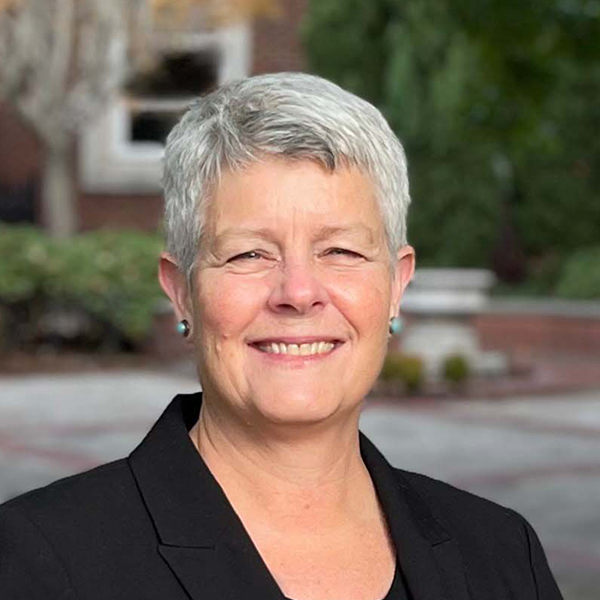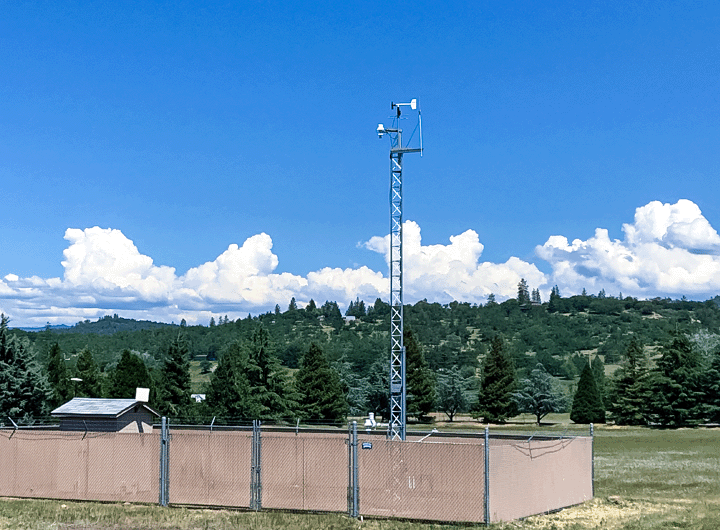Funding
State and Federal Grant Funding Opportunities in November and December 2025

Funding opportunities in the last two months of 2025 will be focused on cleaning up and improving brownfields, nearshore environments, salmon-bearing streams and providing opportunities for tribes and local governments to improve planning and implementation for services from solid waste handling to providing more housing. As the federal administration continues to evaluate federal funding programs, there may be uncertainty about the ongoing availability of these grants. We have included only open funding sources for which funds have been allocated. As always, we recommend that you confirm status and eligibility requirements at the program website links we provide.

November and December 2025
Federal Funding Opportunities
$20 Million in Funding Available to Support Tribal Solid Waste Management
Program aims to support management of post-consumer materials and tribal waste management systems.
The U.S. Environmental Protection Agency will assist tribal waste management authorities by supporting improvements to post-consumer materials management, including recycling programs, and making improvements to waste management systems. Tribes, as defined in 33 U.S. Code 4201, and intertribal consortia are eligible to apply. Eligible projects include developing and updating plans, strengthening data collection, establishing or expanding infrastructure for solid waste handling (such as recycling or composting), and establishing or identifying end markets for recycled materials. The list of eligible activities is broad; see the program page for details. EPA anticipates awarding approximately 20 assistance agreements, with at least one award per EPA region. The minimum individual award floor is $100,000, and the maximum individual award ceiling is $1,500,000. Matching funds are not required. Applications are due December 12, 2025. For more information, visit the Solid Waste Infrastructure for Recycling Grants for Tribes and Intertribal Consortia program page.
Funding Available to Develop Infrastructure for Economic Development
USEDA program supports the planning for and construction of needed infrastructure.
The U.S. Economic Development Administration assists state and local entities in responding to a wide range of economic challenges through the development, updating, or refinement of a comprehensive economic development strategy (CEDS) and grants to support the execution of activities identified in a CEDS, such as infrastructure improvements (including site acquisition), site preparation, construction, rehabilitation, and equipping of facilities. Eligible projects include market and environmental studies, planning or construction, and capitalizing or recapitalizing Revolving Loan Funds to help small businesses. Eligible applicants include district organizations of EDA-designated economic development districts, tribes, local governments, and multijurisdictional entities. Typical awards range from $600,000 to $5 million. A 50 percent match is required for most projects; however, reduced matching percentages may be provided for projects in areas of economic distress. Applications are accepted on an ongoing basis until funding runs out. For more information, visit the Economic Adjustment Assistance page.
Funding Available to Address Challenges in Estuaries
Program aims to address loss of key habitats, the effects of nonpoint source pollution, excess nutrients, and warmer water temperatures in estuary systems.
The National Estuary Program, with support from the U.S. Environmental Protection Agency, is providing funding for projects that address urgent, emerging, and challenging issues threatening the well-being of estuaries. Eligible applicants include state, interstate, tribal, inter-tribal consortia and regional water pollution control agencies and entities; state coastal zone management agencies; nonprofit organizations; and local governments. Applicants must be located in the regions for the Puget Sound Partnership in Washington or the Tillamook Estuaries Partnership or Lower Columbia Estuary Partnership in Oregon. The National Estuary Program Watersheds Grant Mapper provides more information. Prospective applicants are encouraged to schedule a meeting with the program director. Proposals for this round must address loss of key habitats, the effects of nonpoint source pollution, excess nutrients, and/or warmer water temperatures in estuary systems. Awards will range between $200,000 and $500,000. A 30 percent match is required. Letters of intent to apply are due on November 21, 2025; full proposals are due by January 16, 2025. For more information, visit the National Estuary Program Watersheds Grant Program page.
$25 Million for Tribal Transportation Safety Planning
Program aims to improve safety in tribal areas.
The U.S. Department of Transportation is providing approximately $25 million in funding to federally recognized tribes for transportation planning. The program goal is to assist tribes in developing strategies, activities, and projects on public roads to correct or improve a hazard or address a highway safety problem. Some eligible project types include the addition of features such as roundabouts and rumble strips; safety improvements for pedestrians, cyclists, or persons with disabilities; traffic-calming features; installation or replacement of signage; safety planning; collecting safety data; and many others. For projects on facilities not owned by a tribe, a letter of support from the facility owner is required. Matching funds are not required; however, if the number of qualified applications exceeds the available funding, then applicants with leveraged funds will receive priority consideration. Applications are being accepted October 1, 2025, through January 15, 2026. To learn more, visit the Tribal Transportation Program Safety Fund website.
Up to $5 Million Available to Reduce Threats to Public Safety for Tribes
Program supports tribes in making improvements that support public health and safety.
The U.S. Department of Housing and Urban Development is providing funding to help tribes alleviate or remove imminent threats to health or safety. Eligible projects include acquiring land or buildings; improving public facilities, buildings, or infrastructure; assisting community members with relocation or housing; or constructing or improving utilities. Eligible applicants include tribes and tribal organizations. Awards are available for up to $750,000 or up to $1.5 million, depending on the type of disaster. No match is required. Applications are reviewed and accepted on a rolling basis. To learn more, visit the Indian Community Development Block Grant Program page under Imminent Threat Grants.
More than $255 Million in EPA Assessment, Coalition, and Cleanup Grant Funds Anticipated to Be Available Soon
This is the last year that the program will be funded through the Bipartisan Infrastructure Law at this level.
Update: The EPA Multipurpose, Assessment, Revolving Loan Fund, and Cleanup Grant application period is now open, with submissions due by January 28, 2026. We are reviewing the NOFO and will update the content as needed.
The U.S. Environmental Protection Agency is anticipated to publish in late 2025 notices of funding opportunities for its Brownfields Program assessment, coalition, and cleanup grants. More than $255 million in total funding will be available. This will be the last year that the funding will come from the Bipartisan Infrastructure Law, which has funded the program at unprecedented levels. More than ever, applicants—which can include tribes, local governments, coalitions of entities, and states—should try to take advantage of this program.
For applicants that have already received grants, EPA has relaxed the spend-down thresholds to 70 percent, another indication that the agency is trying to get as much funding into the hands of as many applicants as possible. NOFOs will be released at the conclusion of the federal shutdown, but prospective applicants are advised to visit the Multipurpose, Assessment, RLF, and Cleanup Grant Application Resources page and scroll down to Open Solicitations. Once the NOFOs are released, applicants will have a certain number of calendar days to prepare and submit applications; in the past, the timeline has been 45 or 60 calendar days.

November and December 2025
Washington State Funding Opportunities
Funding and Technical Assistance for Climate Resilience
Available to communities or regions that are highly vulnerable to the impacts of climate change.
The public-private Climate Smart Communities Initiative is offering between $60,000 and $115,000 for technical assistance or funding to communities that are highly vulnerable to the effects of climate change. Communities based in the US that face significant impacts from climate-related hazards and reduced socioeconomic investment are eligible to apply. Applications must include partnerships between three types of organizations: adaptation partners, community-based organizations, and a local or regional government entity. Successful applications will center equity and nature-based solutions to climate hazards as well as readiness to increase climate resilience. Funding may be used for completing a climate vulnerability and sensitivity analysis, facilitating planning, community engagement, prioritizing projects, or obtaining financing for planned projects. CSCI will host an applicant webinar on November 13, 2025; applications are due March 12, 2026. Visit the Climate Smart Communities Initiative page to learn more.
$350,000 Available to Combat Invasive Aquatic Plants
Funding can be used for a variety of planning, implementation, and public awareness projects.
The Washington Department of Ecology is providing funding to address and control aquatic invasive species in the state’s water bodies. Tribal and local governments and special purpose districts are eligible to apply. Projects can include development of integrated aquatic vegetation management plans, public education and information, mapping and inventorying aquatic plants, pilot and demonstration projects, activities to control plants, evaluation of implementation effectiveness, and follow-up monitoring. Ecology awards up to $30,000 for planning grants; $50,000 for early infestation projects; and $75,000 for other projects. No match is required. Applications are due December 16, 2025. For more information, visit the Aquatic Invasive Plants Management Grants Program page.
Up to $200,000 Available to Address Toxic Algae
Funding can be used for research, public awareness, and control and management.
The Washington Department of Ecology is providing funding to address blooms of toxic algae in the state’s water bodies. Tribal and local governments and special purpose districts are eligible to apply. Eligible projects include management, monitoring, research, nutrient-reduction, and education and outreach. Projects in lakes that have had harmful freshwater algae blooms in the past three years will be given priority. Grant funding of up to $50,000 per applicant is available. No match is required. This is a competitive grant; the number of applicants usually exceeds the available funding. Applications are due December 16, 2025. For more information, visit the Freshwater Algae Control Grant Program page.
First Round of Community Restoration Grants Open
Program focuses on restoring land in urban and suburban areas.
Nonprofit organization Forterra is providing three rounds of funding to restore land in urban and suburban areas through the Community Restoration Grant program. Tribal governments and nonprofit organizations are eligible to apply (public agencies can partner with tribes or nonprofits but are not primarily eligible). Eligible projects include ongoing or new restoration projects that meet program criteria. Restoration lands must be tribal lands or publicly accessible. Priority will be given to projects that result in community environmental benefits, demonstrate clear impact, benefit or support youth understanding or experience, and support underserved communities. Typical awards range from $10,000 to $25,000; the maximum award is $25,000. No match is required. This is a competitive grant; the number of applicants usually exceeds the available funding. Applications for Round 1 are due November 16, 2025; Round 2 funding will be open from January 12 to February 16, 2026; Round 3 funding will be open from March 2 through March 31, 2026. For more information, visit the Community Restoration Grants page.
Biennial Grant for Fish Barrier Removal Open Now
Funding for projects that remove impediments to salmon and steelhead migration.
The Washington State Recreation and Conservation Office and the Washington Department of Fish and Wildlife, acting through the Brian Abbott Fish Barrier Removal Board, have made funding available for removing stream barriers for migrating salmon and steelhead. Tribal and local governments, special purpose districts, fisheries enhancement groups, and some forest landowners are eligible to apply. Eligible planning or restoration projects must correct a fish passage barrier (such as certain types of culverts) on a salmon-bearing stream. Planning projects must result in a final design. Restoration projects may use the funding for construction. Typical awards vary depending on project type but can range up to $750,000. A match of 0 to 15 percent is required, depending on project type and amount of request—see the guidance for details. Before submitting an application, applicants must notify all federal recognized tribes in the project area; program guidance provides more information and a template for notification. Applications are due January 26, 2026. For more information, visit the Brian Abbott Fish Barrier Removal Board page.
Approximately $3 Million to Support Salmon Recovery Planning
Funding supports updates to comprehensive plans.
The Washington Department of Commerce is providing approximately $3 million in funding to plan for salmon recovery. Tribes and entities fully and partially planning under the Growth Management Act are eligible. Eligible projects will result in incorporating salmon recovery plans into comprehensive plan updates and/or development regulations. A broad list of eligible activities includes watershed characterization, stormwater management, habitat protection, monitoring and adaptive management, improving code enforcement, incentivizing developers to use low-impact development, promoting infill development, and coordinating public works funding to improve stormwater protection. Awards are capped at $500,000. Matching funds are not required. Applications are due November 17, 2025. For more information, visit the 2025–2027 Salmon Recovery through Local Planning Grants page.
Approximately $15 Million Available for Estuary and Salmon Protection in Puget Sound
Program aims to support resilience to climate change in nearshore areas.
The Washington Department of Fish and Wildlife and Washington State Recreation and Conservation Office are providing approximately $15 million for three different subprograms to protect nearshore environments in the Puget Sound region: Beach Restoration Small Grants ($350,000 award maximum), Restoration and Protection ($3 million award maximum), and Regional Pre-Design ($350,000 award maximum). Eligible projects include acquisition, feasibility studies, design, and implementing a restoration project. Projects must occur in the Puget Sound region in the nearshore area (defined in application guidance). Matching funds are not required for this 2026 funding round. All subprograms include pre-proposal and full application deadlines. Pre-proposal applications are due at various times depending on subprogram. The earliest date for pre-proposals is December 2, 2025, for the Beach Restoration Small Grants Program; see the Estuary and Salmon Restoration Program page for all subprogram deadlines and more information.

November and December 2025
Oregon State Funding Opportunities
Funding and Technical Assistance for Climate Resilience
Available to communities or regions that are highly vulnerable to the impacts of climate change.
The public-private Climate Smart Communities Initiative is offering between $60,000 and $115,000 for technical assistance or funding to communities that are highly vulnerable to the effects of climate change. Communities based in the US that face significant impacts from climate-related hazards and reduced socioeconomic investment are eligible to apply. Applications must include partnerships between three types of organizations: adaptation partners, community-based organizations, and a local or regional government entity. Successful applications will center equity and nature-based solutions to climate hazards as well as readiness to increase climate resilience. Funding may be used for completing a climate vulnerability and sensitivity analysis, facilitating planning, community engagement, prioritizing projects, or obtaining financing for planned projects. CSCI will host an applicant webinar on November 13, 2025; applications are due March 12, 2026. Visit the Climate Smart Communities Initiative page to learn more.
$10 Million Available for Infrastructure that Supports Housing
Eligible infrastructure projects must support a proposed housing development.
The Oregon Legislature established the Housing Infrastructure Financing Program as a new opportunity to unlock housing development through funding infrastructure projects that support housing. Eligible applicants include local or tribal governments; districts such as transportation districts, water suppliers, housing authorities, and metropolitan services districts; and intergovernmental entities. Eligible projects may address transportation, water, wastewater, or stormwater infrastructure; system capacity upgrades; or site developments that support infrastructure improvements. Awards are expected to range between $100,000 and $2 million. Applications are due December 17, 2025. Visit the Housing Infrastructure Financing Program page to learn more.
$3 Million Available for Electric Vehicle Charging Infrastructure
Funding will prioritize low-income and rural communities.
To support adoption of electric vehicles, the Community Charging Rebates program is providing funding for the installation of Level 2 charging stations. Eligible applicants include local or tribal governments, nonprofit organizations, and businesses. Applicants must own the site or be an authorized agent to apply. Most of the program funding is reserved for rural and low-income communities. Rebates are based on a maximum dollar amount or percentage of eligible project costs. For publicly accessible parking, workplaces, or multifamily housing with Level 2 chargers, the maximum rebate is $8,000 or 80 percent of eligible project costs. Total rebate awards are capped at $249,000 per project site or 80 percent of eligible project costs. The application period is expected to open November 6, 2025, and will remain open as long as funds are available or until March 31, 2026. Visit the Community Charging Rebates Program page to learn more.
Questions About Funding Opportunities?
Contact
Contact Seth for help with grant application and strategy.





